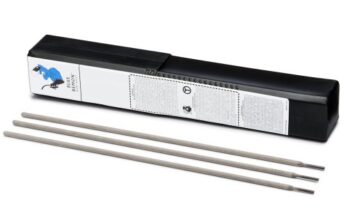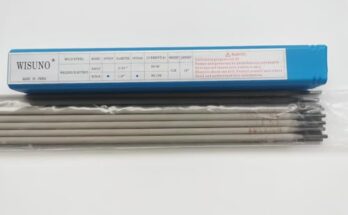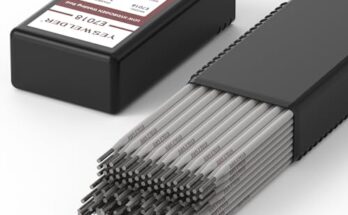Need to join pieces of steel? Understanding the right welding rods for steel is crucial for a strong, reliable weld. This guide will help you choose the perfect rods for your project, covering different types, applications, and considerations.
Welding rods, also known as electrodes, are essential consumables in the arc welding process.
They provide the filler metal needed to create a strong bond between steel components. Choosing the right rod depends greatly on the type of steel you’re working with, the desired weld properties, and the welding environment.
Types of Steel and Corresponding Welding Rods
Steel isn’t a single material; many variations exist, each requiring a specific type of welding rod. Mild steel, for example, is commonly welded using E6010 or E7018 rods. E6010 is known for its versatility and ease of use, making it a great choice for beginners. It’s a fast-freezing rod, ideal for out-of-position welding. E7018, on the other hand, is a low-hydrogen rod, offering superior strength and impact resistance, perfect for critical applications where the weld needs to withstand significant stress. For stainless steel, you’d need rods specifically designed for that alloy, such as 308L or 309L, to avoid corrosion and maintain the stainless steel’s properties. The selection process is critical, similar to choosing the right drill bit for a specific material; using the wrong rod can lead to weak welds, porosity, or even cracking. Think of it like choosing the right screw for a specific type of wood – a small screw for softwood, and a larger, stronger screw for hardwood. Improper selection can compromise the entire structure.
Flux-Cored vs. Solid Welding Rods
Two primary types of welding rods exist: solid and flux-cored. Solid welding rods have a single metal core with a coating of flux that provides shielding gas and helps with arc stability. They are generally preferred for their cleaner welds and superior penetration but can be more challenging for beginners due to the need for precise technique. Flux-cored rods, however, contain a core of metal powder mixed with flux, generating their own shielding gas, and are thus often easier to use, especially in outdoor or windy conditions. Think of the flux as a protective layer around the weld, shielding it from atmospheric contamination and helping it to cool evenly. They often perform better in thicker materials and offer greater versatility in welding positions. The choice between solid and flux-cored largely depends on your experience level and the specific project requirements. Imagine flux-cored as an “easy-to-use” version, forgiving minor errors, while solid rods require greater precision and skill for optimal results.
Choosing the Right Diameter Welding Rod
The diameter of the welding rod directly impacts the penetration depth and the rate at which the weld is produced. Thicker rods offer greater penetration, ideal for thicker materials, while thinner rods are better suited for thinner materials and more detailed work. You wouldn’t use a thick welding rod to repair a delicate piece of jewelry – just as you wouldn’t use a tiny hammer to drive in a large nail. It’s all about balance, choosing a diameter that’s appropriate for the material’s thickness and the desired weld profile. The choice also impacts the amperage settings for your welding machine; larger diameter rods usually require higher amperage to melt properly.
Welding Rod Coatings and Their Functions
The coating on welding rods, often called the flux, isn’t just there for decoration. It plays a crucial role in protecting the weld pool from atmospheric contamination like oxygen and nitrogen.
Understanding Flux Composition and Its Impact
The composition of the flux varies depending on the type of welding rod. Common components include minerals like calcium carbonate, potassium feldspar, and manganese oxide. These minerals react with the air, creating a protective atmosphere around the weld, preventing oxidation. Some coatings are also designed to help with arc stability, reducing spatter and making the welding process smoother. It is important to note that the composition will greatly affect the ease of use, strength of the resulting weld, and the type of steel it’s compatible with. This is why it’s vital to choose a welding rod with a coating suited to your application. It’s like choosing the right paint for a project – the wrong paint won’t adhere properly, and might not provide the desired protection.
Low-Hydrogen vs. High-Hydrogen Welding Rods
The hydrogen content in the welding rod’s coating is another important consideration. Low-hydrogen rods are ideal for applications that require high-strength welds, such as pressure vessels or critical structural components. This is because high levels of hydrogen can lead to cracking during the cooling process. Imagine hydrogen as a tiny enemy, causing internal stresses that weaken the final weld. High-hydrogen rods, however, are simpler to use and are acceptable for less demanding applications.
The Role of Shielding Gas
In some welding processes, especially Gas Metal Arc Welding (GMAW) or Gas Tungsten Arc Welding (GTAW), shielding gas is added to the welding process to provide additional protection from atmospheric contamination. Common gases include Argon, Helium, and Carbon Dioxide, or a mixture of these. These gases create an inert atmosphere around the weld pool, further enhancing weld quality. Think of the shielding gas as a second layer of protection, ensuring the weld is not only protected during the welding process, but also as it cools. This minimizes oxidation, enhancing the durability and strength of the final weld.
Factors Influencing Welding Rod Selection
Many factors need to be considered when choosing welding rods for steel. The right choice ensures a high-quality, durable weld.
Steel Type: A Critical Consideration
As previously mentioned, the type of steel being welded is the most important factor. Mild steel, high-strength steel, stainless steel, and other alloy steels all have unique welding requirements. Choosing the wrong rod for the type of steel could lead to unsatisfactory results, potentially weakening the final weld and creating potential risks. Think about this in the context of carpentry – you wouldn’t use the same type of wood for a simple shelf as you would for a structural beam. This directly mirrors the importance of proper material selection in welding.
Welding Position: Vertical, Overhead, Flat
The welding position affects the fluidity of the weld pool and the ease of application. For overhead welding, a fast-freezing rod is preferred to minimize the risk of the weld metal sagging before it solidifies. For flat welding, where gravity is less of a concern, more options are available. The choice of the welding rod directly impacts the feasibility of the welding position – some rods are simply not suitable for certain welding positions, like working overhead. This is a key consideration for the safety and effectiveness of the work.
Amperage and Voltage Settings
Your welding machine’s amperage and voltage settings must be adjusted to match the diameter and type of welding rod. Incorrect settings can lead to a poor weld, excessive spatter, or even damage to your equipment. The amperage acts as the power of the weld, while the voltage affects the arc length and heat. Choosing the right settings is like making a fine adjustment of the tools; slight changes can make a big difference between a beautiful, strong weld, and a faulty, weak one.
Common Welding Rod Types
Several common welding rod types cater to various steel types and welding applications. Let’s delve deeper into some of the most frequently used ones.
E6010 Welding Rods: Versatile and Beginner-Friendly
E6010 rods are known for their versatility and ease of use. They’re a good starting point for beginners as they’re easy to handle, requiring less precise control compared to some other types. Their fast-freezing properties allow for out-of-position welding, which many beginners initially find challenging. However, the weld’s quality can be slightly lower than with some other rod types, making them unsuitable for high-stress applications. It is a similar concept to the starting vehicles for aspiring drivers – practical and easy to use, but not the best when compared with more advanced models.
E7018 Welding Rods: Superior Strength and Low Hydrogen Content
E7018 rods offer superior strength and impact resistance, particularly relevant in critical applications where the weld needs to withstand high stress. Their low-hydrogen content minimizes the risk of cracking, ensuring a much stronger and safer final weld. While they might be more expensive and require slightly more precise control than E6010 rods, the increased weld quality justifies the effort for critical applications. Consider this type similar to premium tools in other fields, slightly more expensive, but worth the extra cost when reliability and quality are paramount.
Stainless Steel Welding Rods: Maintaining Corrosion Resistance
Stainless steel welding rods, such as 308L and 309L, are crucial for maintaining the corrosion resistance of stainless steel components. These rods are specifically designed to maintain the properties of the base metal, preventing corrosion and ensuring the longevity of the weld. Using an improper rod would not only weaken the weld but also introduce vulnerability to corrosion, defeating the primary purpose of stainless steel’s use.
Safety Precautions When Using Welding Rods for Steel
Safety is paramount when welding. Ignoring safety precautions can lead to severe injuries.
Essential Personal Protective Equipment (PPE)
Always wear appropriate PPE, including a welding helmet with a shade suitable for the type of welding, welding gloves, long sleeves, and sturdy closed-toe shoes. Eye protection is especially important to prevent eye damage from the bright arc and hot spatter. The welding helmet’s proper use directly affects eye safety, just as a helmet does for riders on a motorcycle. This is an important similarity to remember, and not one to take lightly.
Ventilation and Proper Workspace
Ensure adequate ventilation in your workspace to reduce the exposure to fumes and gases released during the welding process. Proper ventilation is important to mitigate the dangers of breathing in welding fumes, just as wearing a seatbelt is paramount in preventing serious injury in an automobile accident.
Fire Safety
Welding can cause sparks and hot spatter that can easily ignite flammable materials. Keep a fire extinguisher nearby and ensure that the area around the welding workspace is free of flammable materials. This is a critical consideration, as unattended welding can easily lead to catastrophic events. Fire safety measures must be in place and strictly observed before, during, and after any welding operations.
Advanced Welding Techniques and Considerations
For more advanced welders, mastering techniques like proper arc control and bead formation enhances weld quality significantly.
Controlling the Arc Length and Current
Proper arc length control is essential to create a stable arc and a smooth, consistent weld. The current, or amperage, should be properly adjusted to ensure proper penetration and avoid burn-through. The fine control of the amperage and voltage reflects the artistry of skilled welders, similar to the precise control musicians have over their instruments. This level of mastery comes with experience and practice.
Understanding Weld Bead Formation
The formation of the weld bead significantly affects the weld’s overall strength and appearance. A consistent, smooth bead indicates proper technique and arc control. Conversely, an uneven bead can suggest issues with welding technique, rod type, or machine settings. The visual appearance of the weld bead is a good indicator of welding quality, similar to how the quality of a painting reflects the artist’s skill. A neat weld bead is not merely aesthetic; it represents consistent application and high quality.
Choosing the Right Welding Equipment
Having the proper welding equipment alongside the right welding rods enhances efficiency and weld quality.
Matching Welding Machines to Rod Types
Different welding machines are suited to different types of welding rods. For example, a MIG welder is ideal for flux-cored rods, while a stick welder is more commonly used for solid welding rods. It’s essential to consult the welding machine’s specifications to ensure compatibility with the chosen welding rod type. The proper machine selection ensures the equipment can support the demands of the welding rod, similar to a power tool selected appropriately for the material being worked on.
Frequently Asked Questions
What are welding rods for steel best for?
Welding rods for steel are best for joining pieces of steel together, creating a strong, durable bond. They are used in various applications, from repairing broken metal parts to constructing large structures. The specific type of welding rod will depend on the type of steel being welded, the desired weld properties, and the welding environment.
What is the difference between E6010 and E7018 welding rods?
E6010 rods are versatile and easy to use, ideal for beginners and out-of-position welding. E7018 rods offer superior strength and low hydrogen content, ideal for critical applications requiring high-strength welds. Think of E6010 as a workhorse, good for many tasks, while E7018 is a premium option for high-stakes projects.
How do I choose the right diameter welding rod?
The diameter of the welding rod should match the thickness of the steel being welded. Thicker rods are used for thicker steel, while thinner rods are used for thinner steel. Consider the project’s requirements and the machine’s capabilities; too large a diameter may be difficult for the machine, while too small a diameter will result in inadequate penetration.
What is the importance of the welding rod coating (flux)?
The flux coating protects the weld pool from atmospheric contamination like oxygen and nitrogen, which can weaken the weld. It also helps with arc stability and improves the overall welding process. Think of it as the armor protecting the weld’s integrity.
What safety precautions should I take when using welding rods?
Always wear appropriate PPE, including a welding helmet, gloves, long sleeves, and sturdy closed-toe shoes. Ensure adequate ventilation and keep flammable materials away from the workspace. Welding is dangerous; observing safety protocols is paramount. Learn more about welding safety procedures.
How do I maintain my welding equipment?
Regularly cleaning and inspecting your welding machine and equipment is essential for longevity and efficient performance. Consult your machine’s manual for specific maintenance procedures. Proper maintenance ensures safety and optimal operation.
What are some common problems encountered when welding steel?
Common problems include poor penetration, excessive spatter, porosity, and cracking. These issues can often be resolved by choosing the correct welding rod type, adjusting machine settings, or improving welding technique.
Final Thoughts
Selecting the appropriate welding rods for steel is a critical step in any welding project. Understanding the various types, their properties, and the necessary safety precautions ensures a strong, reliable, and safe weld. From choosing the correct diameter and type to mastering welding techniques, the path to proficiency is paved with knowledge and practice. Remember, safety is paramount; never compromise your safety or that of others. Now that you’re equipped with a solid understanding of welding rods for steel, go ahead and start your project confidently! If you want to dive deeper into specific types of welding rods or advanced techniques, explore additional resources online or in your local library.


